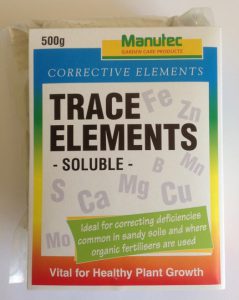Giving your Plants and Garden Lawn a Boost
Calculating fertilizer application

Plants and garden lawns are somewhat just like humans because just as we need nutrients to grow strong and healthy in order to maintain good health so it is with plants and garden lawns. These vitamins or nutrients are the building blocks that are so important that it is a must that we give our garden plants these nutrients so they can have a good boost or perform at their best
But what we must be careful of however is the amount of fertilizers we apply because giving the wrong rates can really work against our plants and garden lawns causing server damage. Can you imagine having such beautiful garden plants or a lawn that is breathtaking and growing so healthy then applying an application of fertilizer in the wrong way only to see your garden plants or beautiful lawn wilt and die? This has been the mistake of many that paid dearly, this is not a good experience and it shouldn’t be yours either.
Some may think that a little extra can help but it is that little extra that can cause such a disaster. Remember synthetic 0r man-made fertilizer salts, if allowed to heap or build up around plant’s root zone will draw water out of garden plants causing plants to wilt and die, the seem goes for garden lawns. In this article, we will be taking a closer look at how to apply fertilizers in the right way.
Fertilizer Rates And Applications

The first rule is to decide what you are using whether quick-release or slow-release, each fertilizer has its advantages and disadvantage. For more on these fertilizers follow the link. When using water-soluble fertilizer, nutrients are made available right away to plants, these fertilizers can also cause much damage if applied at the wrong rates.
I have seen many persons apply fertilizers this way either they did not know any better or maybe they made applications in this way with the hope that it would work in their favor but this is not a guessing game because your garden plants and lawn is at stake and the last thing you want is to lose time, money and your garden plants or lawn because of applying fertilizers the wrong way. So let’s do it right the first time and then pat ourselves on the back for doing such a good job. Doing it the right way is always better and pays off in so many ways.
Fertilizer Rates And Applications
Calculating fertilizer rates for a garden lawn example
- Before applying fertilizers it is always good to get a soil test done because a soil test will let you know what nutrients are lacking and from this test, you will know what fertilizer to purchase
- NPK on fertilizer bags stands for nitrogen, phosphorous, and potassium which are major elements. For more on plant, nutrients click here. Plant nutrients.
- If a bag of fertilizer is labeled 22-4-8 that means that the % of the nitrogen in that bag is 22 lbs the prosperous content is 4 lbs and the potassium is 8 lbs
- When calculating the square footage of a turf always times the with by the length and an example of this would be length =100 x 50 which is the width. This will give the complete square feet which are 5000 sq. ‘ft
- The standard rate for applying or measuring fertilizer application is 1 lb of nitrogen per 1000 sq. ‘ft
- The formula would look like this 1 lb. nitrogen per 1000 sq. ‘ft divide x % of the nitrogen in the bag
- or 1 lbs of nitrogen divide x .22 = 4. 45 lbs
- 5000 sq. ‘ft x 4. 45 divided by 1000 sq. ‘ft = 22.25 lbs of fertilizer to cover 5000 sq. ft
Always use this formula and your lawn will love you. it is good to know that you don’t have to play the guessing game or take a chance. With this formula, you can’t go wrong.
Note: Always follow the manufacturer’s label on fertilizer bag for the label is the law.
Besides our lawns, we also have our shrubs, ground covers, and other garden plants that needed a boost also.
Fertilizer Rates And Applications
Fertilizer application rates for garden plants
We have discussed how to calculate and apply fertilizer at the proper rate now it’s on to our garden plant, why I think it is only fear not to keep our garden plants hanging or getting them jealous but to give them our attention also.
Ture story
A valuable lesson that I learned many years ago was working at a five-star resort where I was part of the landscaping team that did a fabulous job not say bragging but we all knew our stuff. Now the landscaping team as our custom was always raked all of the fallen leaves from around the base of the garden plants, why I mean it was a five-star resort whose landscape should look polished and plush at all times right.
But what we were told by our director at the time was not to remove all of the leaves but leave enough that would help add nutrients to the soil by the process that we know as decomposition which was so true. The plants got their share of natural organic and looked great. Also, some of the leaves were deliberately left just for this purpose. Just taught to throw that in so you would know the power of organic matter.
Fertilizing garden plants
There are fertilizer types with different modes of action. For more on fertilizers follow the links quick release and slow or control release fertilizers. When it comes to garden plants it may not be so clear because there are many species of plants of various sizes.
The rules are different when it comes to garden plants. What you can do is read and follow the manufacturer’s label. This information will give you insight on how to go about this.
Final word
Fertilizers are nutrients that benefit lawns and garden plants in such a big way. The job of the home gardener is when applying fertilizers to apply these fertilizers in the right way so your plants and garden lawns can benefit the most from them.
About the author
Norman loves being in the garden, both at home and for his job....
he is 'Natures Little helper' being outdoors, growing his vegetables and flowers from an early age.
Now having spent over 22 years in the profession he want to give some of his knowledge to others...
his vast array of hints and tips you will find scattered over this site will help you no end growing plants in your garden.
